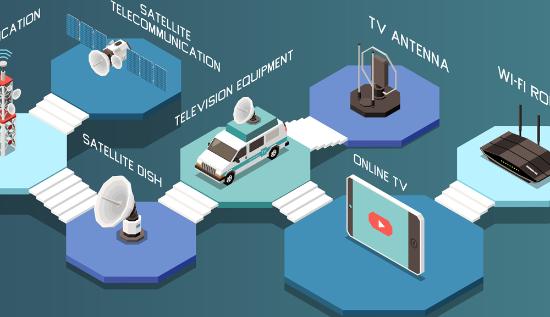Sensor Networks for Real-Time Monitoring: IoT Solutions

Explore cutting-edge IoT sensor networks and wireless sensor systems driving real-time monitoring solutions for smarter, safer, and connected industries.
In today’s hyper-connected world, sensor networks for real-time monitoring are transforming how industries, cities, and organizations operate. These intelligent systems use distributed sensors to collect, analyze, and transmit data instantly—enabling better decision-making, efficiency, and safety.
With the evolution of IoT sensor networks, businesses now have the capability to monitor operations remotely, predict maintenance needs, and respond proactively to potential issues. Whether in manufacturing, healthcare, energy, or environmental science, the role of real-time data monitoring systems has become indispensable.
This article explores how sensor networks for real-time monitoring work, their core components, the technologies driving them, and the benefits of implementing IoT-based remote monitoring solutions across different industries.
Understanding Sensor Networks for Real-Time Monitoring
At its foundation, a sensor network for real-time monitoring is an intelligent system made up of numerous spatially distributed sensors that continuously collect, process, and transmit data to a centralized hub or cloud-based platform. These interconnected sensors detect and measure a wide range of environmental and operational parameters—such as temperature, vibration, humidity, air quality, pressure, light intensity, or motion—and share this information instantly through secure communication channels. The primary goal of these networks is to provide organizations with a constant stream of actionable data, enabling quick responses to changes and fostering data-driven decision-making in complex environments.
The term IoT sensor networks describes the seamless integration of sensor technology with the Internet of Things (IoT) ecosystem. In this setup, sensors are not just simple data collectors; they become smart, connected devices capable of communicating over wireless protocols and transmitting information to advanced cloud computing systems. This architecture allows for large-scale connectivity and interoperability, where thousands of devices can operate harmoniously across industrial sites, smart cities, and environmental monitoring projects. These networks form the backbone of modern real-time data monitoring systems, providing continuous feedback, predictive analytics, and automated control to optimize performance and reduce risks.
Modern wireless sensor networks (WSNs) represent the next evolutionary step in monitoring technologies. By removing the limitations of physical wiring, WSNs enable easier, faster, and more cost-effective deployment—even in remote, hard-to-reach, or hazardous environments where traditional wired systems are impractical. These networks use wireless communication protocols such as Zigbee, LoRaWAN, Wi-Fi, or cellular 5G to transmit data securely and efficiently over long distances. This wireless capability is especially valuable in large-scale industrial operations, environmental research, and smart infrastructure systems.
For businesses operating in sectors like energy, manufacturing, or logistics, industrial sensor networks play an indispensable role. They provide the reliability, scalability, and precision needed for mission-critical applications—monitoring everything from machinery vibration and pipeline pressure to power grid stability and production efficiency. The combination of sensor networks for real-time monitoring, IoT connectivity, and wireless communication has created an ecosystem where organizations can maintain constant situational awareness, prevent costly downtime, and achieve new levels of operational excellence.
How IoT Sensor Networks Work
At the heart of every IoT sensor network lies a layered architecture designed to ensure seamless data flow from the physical world to intelligent decision-making systems. These networks operate through three interconnected layers, each playing a critical role in transforming raw sensor data into valuable insights for real-time operations.
1. Sensing Layer:
This is the foundation of the system—the layer where physical sensors are deployed to detect and capture measurable data from their surrounding environment. Depending on the application, these sensors may measure parameters such as temperature, pressure, vibration, humidity, gas concentration, or movement. In industrial settings, for instance, industrial sensor networks might monitor motor speed, fluid levels, or machine vibration to assess performance and detect early signs of wear. These sensors act as the “eyes and ears” of the network, continuously collecting precise, real-time data.
2. Network Layer:
The network layer serves as the communication backbone, connecting thousands of distributed sensors through various transmission technologies. Typically built on wireless sensor networks, this layer facilitates reliable and energy-efficient communication between sensor nodes, gateways, and central servers. Modern networks leverage protocols such as Zigbee, LoRaWAN, Wi-Fi, or 5G to ensure stable long-range data transfer with minimal latency. This flexibility allows IoT sensor networks to operate across vast industrial sites, urban infrastructures, and remote environmental locations without the constraints of traditional wired systems.
3. Application Layer:
At the top of the hierarchy lies the application layer—the intelligence engine of the entire real-time data monitoring system. Here, advanced software platforms and analytics tools process the data received from sensors. Using cloud computing, AI, and machine learning algorithms, the system analyzes vast datasets to identify trends, detect anomalies, and generate predictive insights. The outcome is actionable intelligence that helps organizations make quick, informed decisions, often triggering automated responses or alerts when irregular patterns are detected.
In a modern real-time data monitoring system, this seamless interaction between layers enables a continuous flow of information. Sensors feed data to gateways, which transmit it to cloud platforms in real time. Once the information is analyzed, the system can visualize performance dashboards, issue alerts, or even initiate automated corrective actions.
The Role of Wireless Sensor Networks
Wireless sensor networks (WSNs) are the backbone of most modern IoT monitoring systems. They rely on wireless communication protocols—such as Zigbee, LoRaWAN, Wi-Fi, or 5G—to link hundreds or even thousands of sensors in a single ecosystem.
Unlike wired systems, WSNs are cost-effective and flexible. They can cover vast areas and are ideal for remote locations where cabling is impractical. This makes them crucial for environmental monitoring sensors deployed in forests, oceans, or agricultural fields.
In industrial sensor networks, wireless connectivity allows seamless communication between machines and control centers. Factories can thus monitor real-time parameters like temperature, vibration, or fluid levels to maintain process efficiency and safety.
The integration of wireless sensor networks with IoT cloud platforms also supports remote monitoring solutions with connected sensors, enabling decision-makers to access live operational data from anywhere in the world.
Smart Sensor Applications Across Industries
The rise of smart sensor applications has revolutionized how businesses collect and interpret data. These intelligent devices go beyond traditional sensors—they can preprocess data locally, detect anomalies autonomously, and communicate insights without requiring continuous human intervention.
Here are several key sectors benefiting from IoT sensor networks and smart sensor applications:
Manufacturing and Industry 4.0
Industrial sensor networks are central to modern factories. They monitor equipment health, track production output, and support predictive maintenance strategies. Real-time data monitoring systems in manufacturing reduce waste, improve quality control, and prevent unplanned downtime.
Healthcare
In medical environments, IoT sensor networks enable remote patient monitoring, allowing healthcare professionals to track heart rate, oxygen levels, and temperature in real-time. This data can trigger alerts if readings fall outside safe thresholds.
Environmental Management
Environmental monitoring sensors track air and water quality, weather patterns, and pollution levels. With sensor networks for real-time monitoring, authorities can respond quickly to environmental hazards or detect early signs of ecological imbalance.
Smart Cities
In smart city infrastructure, wireless sensor networks manage utilities like street lighting, traffic flow, and waste management. These remote monitoring solutions with connected sensors help cities become more energy-efficient and responsive.
Energy and Utilities
Energy companies rely on industrial sensor networks to monitor pipelines, grid performance, and energy consumption. These systems provide early warnings of leaks or faults, ensuring reliability and safety.
Environmental Monitoring Sensors: Protecting Our Planet
Climate change and environmental degradation have created a pressing need for environmental monitoring sensors. These sensors measure variables such as CO₂ concentration, soil moisture, water quality, and temperature.
Deployed in forests, rivers, and oceans, IoT sensor networks enable scientists and governments to track environmental trends in real time. For example, sensor networks for real-time monitoring can detect forest fires, track glacier melt rates, or monitor pollution in urban centers.
By integrating wireless sensor networks into sustainability efforts, organizations can collect vast amounts of data to drive policy changes and improve disaster response strategies. This is a perfect demonstration of how sensor networks enable real-time monitoring in industry and the environment.
How Sensor Networks Enable Real-Time Monitoring in Industry
Industries such as oil & gas, manufacturing, logistics, and energy heavily depend on real-time data monitoring systems to maintain safety and efficiency.
Here’s how sensor networks enable real-time monitoring in industry:
- Predictive Maintenance: By continuously tracking equipment health through industrial sensor networks, businesses can predict when machinery will fail and schedule maintenance before costly downtime occurs.
- Process Optimization: Data from IoT sensor networks can reveal inefficiencies in production lines, enabling managers to fine-tune operations.
- Safety Monitoring: Wireless sensor networks can detect toxic gases, leaks, or temperature spikes, triggering automatic emergency protocols.
- Quality Assurance: Sensors ensure products meet quality standards by tracking conditions throughout production and transportation.
In short, sensor networks for real-time monitoring are reshaping industrial operations, allowing for smarter decision-making, cost reduction, and improved reliability.
Remote Monitoring Solutions with Connected Sensors
The concept of remote monitoring solutions with connected sensors allows organizations to oversee assets and operations regardless of geographic location. This capability is invaluable in sectors like energy, agriculture, logistics, and construction.
These IoT sensor networks rely on cloud-based dashboards that present live data analytics. Engineers and managers can visualize performance metrics, receive automated alerts, and make remote adjustments when necessary.
For instance, in agriculture, environmental monitoring sensors track soil moisture, rainfall, and sunlight levels, enabling farmers to optimize irrigation and fertilizer use. In utilities, industrial sensor networks remotely monitor pipelines to detect leaks or corrosion in real-time.
Such remote monitoring solutions improve operational uptime, minimize maintenance costs, and enhance safety—all made possible through real-time data monitoring systems and IoT connectivity.
Benefits of Real-Time Monitoring Using IoT Sensor Networks
The benefits of real-time monitoring using IoT sensor networks are vast and extend across every industry. Some of the key advantages include:
1. Increased Efficiency
By automating data collection and analysis, real-time data monitoring systems eliminate manual processes and ensure quick decision-making.
2. Predictive Maintenance
Industrial sensor networks detect wear and tear early, helping prevent costly equipment failures.
3. Enhanced Safety
Wireless sensor networks provide continuous environmental and machine monitoring, reducing risks of accidents or hazardous exposure.
4. Improved Product Quality
Smart sensor applications enable fine-grained process control, ensuring products meet quality standards.
5. Cost Savings
Fewer breakdowns, optimized energy use, and reduced waste translate into significant cost savings for businesses.
6. Remote Accessibility
Remote monitoring solutions with connected sensors allow data access and control from anywhere, improving responsiveness and flexibility.
The benefits of real-time monitoring using IoT sensor networks go beyond simple data collection—they empower organizations with visibility, control, and foresight.
Challenges in Implementing IoT Sensor Networks
While the advantages are compelling, implementing IoT sensor networks also presents several challenges:
- Data Security: Protecting sensitive data transmitted through wireless sensor networks requires strong encryption and cybersecurity protocols.
- Scalability: Expanding industrial sensor networks across large operations can be complex and costly.
- Interoperability: Integrating sensors from multiple manufacturers into one real-time data monitoring system can lead to compatibility issues.
- Power Consumption: Many environmental monitoring sensors are deployed in remote areas where power availability is limited.
Overcoming these challenges often involves selecting the right hardware, leveraging efficient communication protocols, and adopting robust IoT platforms that support scalability and integration.
Future Trends in Real-Time IoT Sensor Networks
As technology continues to evolve, sensor networks for real-time monitoring are becoming more intelligent and efficient. The future of IoT sensor networks will be defined by advancements in AI, edge computing, and low-power communication.
AI and Edge Analytics
AI-powered analytics allow smart sensor applications to process data locally, reducing latency and bandwidth use. Edge devices will enable faster decision-making in real-time data monitoring systems.
5G Connectivity
The rollout of 5G will dramatically enhance wireless sensor networks, providing ultra-low latency and higher data transmission rates—essential for critical industrial operations.
Sustainability and Energy Harvesting
Future environmental monitoring sensors may harness renewable energy sources (like solar or vibration) to remain operational indefinitely.
Integration with Digital Twins
Industrial sensor networks will feed data directly into digital twin models, allowing real-time simulation and predictive analytics for factories, buildings, and even cities.
Blockchain for Data Security
Blockchain-based systems will enhance the trust and integrity of remote monitoring solutions with connected sensors, ensuring tamper-proof data transactions.
The benefits of real-time monitoring using IoT sensor networks will expand even further as these technologies mature, providing unprecedented transparency and control over industrial and environmental processes.
Conclusion
The age of connectivity has redefined how organizations perceive and interact with their environments. Sensor networks for real-time monitoring form the foundation of this transformation, enabling continuous awareness, predictive insights, and smarter decisions.
Through the integration of IoT sensor networks, wireless sensor networks, and smart sensor applications, industries can monitor complex systems in real-time—ensuring efficiency, safety, and sustainability. From environmental monitoring sensors to industrial sensor networks, the possibilities are endless.
As we move toward a more intelligent and automated world, remote monitoring solutions with connected sensors will continue to bridge the physical and digital realms. The benefits of real-time monitoring using IoT sensor networks—improved performance, predictive maintenance, and proactive management—will remain essential drivers of progress in the digital era.
Ultimately, sensor networks enable real-time monitoring in industry not just by delivering data, but by empowering organizations with insight, control, and foresight—paving the way for smarter, safer, and more sustainable operations worldwide.
More Articles
 06 Dec 2025
06 Dec 2025
AI Chatbots for Customer Support & Virtual Assistants
Boost customer satisfaction with intelligent AI chatbots for customer support. Deliver instant responses, automate service tasks, and scale your support team 24/7 with smart virtual assistants.
 06 Dec 2025
06 Dec 2025
Custom Apps vs Ready-Made Software: Key Benefits
See how custom apps vs ready-made software impact productivity, integration and flexibility for businesses of all sizes.
 05 Dec 2025
05 Dec 2025
eWallet and Online Transaction Security in Cambodia
Stay protected with essential insights on eWallet and online transaction security in Cambodia, covering key risks, safety practices, and fraud prevention tips.
 04 Dec 2025
04 Dec 2025
Apply for Senior Business Analyst – Loma Technology
Detailed resource explaining the Senior Business Analyst Loma Technology role, ideal for candidates seeking clarity on expectations and recruitment stages.